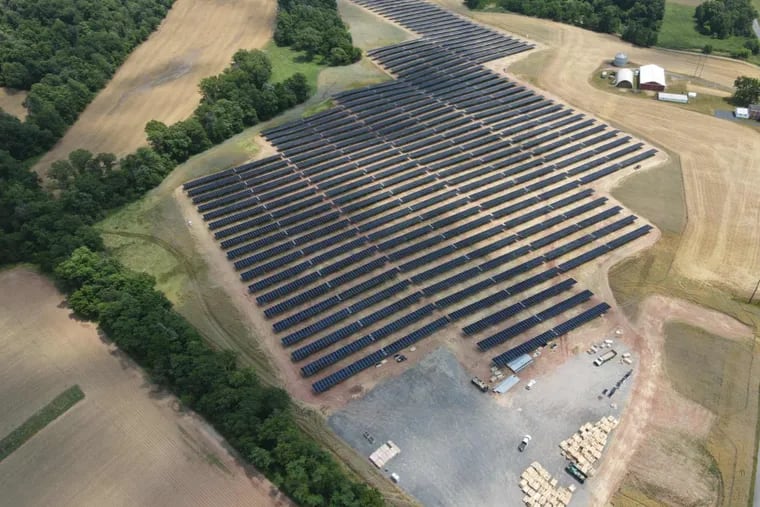Solar, wind, or hydroelectric could be the next big source of renewable power for Philadelphia’s municipally owned buildings.
On the heels of connecting Philly to its first big solar array, city officials said Tuesday that they are looking to plug into an even larger renewable energy source within the next few years to help power the city’s 600 municipal-owned buildings.
Mayor Cherelle L. Parker and members of her administration made the announcement during an event at City Hall marking the city’s recent link to a solar farm in Adams County that’s supplying an estimated 25% of power needed for city buildings.
That project, operated by Energix Renewables and known as the Adams Solar Project, recently started providing a portion of the electricity used at City Hall, Philadelphia International Airport, the Water Department, and other buildings.
Parker said the renewable energy source helps the city meet its goals of 100% renewable energy by 2030 and creates “regional jobs in the renewable energy sector … for a safer, cleaner, greener Philadelphia with economic opportunity for all.”
The city is accepting bids for the new, second renewable energy project to be operational between 2025 and 2030.
» READ MORE: Philadelphia begins powering City Hall and the airport by a solar array 100 miles away
Emily Schapira, president and CEO of the Philadelphia Energy Authority, an independent municipal agency, said the project could generate power from solar, wind, hydroelectric, or other renewable sources. Bids are due in July.
“We know that there are lots of projects, either in development or already completed, that could fit the bill,” Schapira said. “So we know that there are options in the marketplace. The question is what that pricing will look like.”
The contract would likely be for 20 years, similar to the one the city signed with Energix Renewables for the Adams Solar Project.
City-owned buildings use about 700,000 megawatt hours of energy a year.
The Adams Solar Project, in Straban Township, is capable of producing 150,000 megawatt hours annually. That array — or the collection of solar panels — feeds to a substation that sends power to the regional grid operated by PJM, which coordinates electricity regionally across multiple states including Delaware, New Jersey, and Pennsylvania. The power is then delivered to Peco territory for use by Philadelphia.
The city’s new bid calls for a renewable energy system at least comparable in size or capable of producing as much as 490,000 megawatt hours a year. The rate the city would pay for the electricity would be determined by the lowest bid.
Schapira said the renewable energy can be produced anywhere in the territory of the region’s grid operator, PJM, and not necessarily Pennsylvania. PJM coordinates electricity used by 65 million people across 13 states, including Pennsylvania, New Jersey, and Delaware.
Pricing rates can be tricky, Schapira said, because the cost of renewable energy credits, known as RECs, has to be factored in.
RECs are issued to renewable energy producers because tracking the source of electricity in a utility grid is difficult. Renewable energy companies are awarded a REC for each megawatt hour of electricity produced. RECs can be traded like commodities. Buyers get proof that the electricity they purchased is from a renewable source.
Philadelphia would likely buy RECs from the winning bidder as part of a power purchase agreement. The city is obligated to purchase RECs to show it is complying with its sustainability goals.
“We’ll have to see how competitive folks can get with what we normally pay,” Schapira said of potential rates. “Our goal is to make it as cost neutral for the city as possible, or even a savings.”
